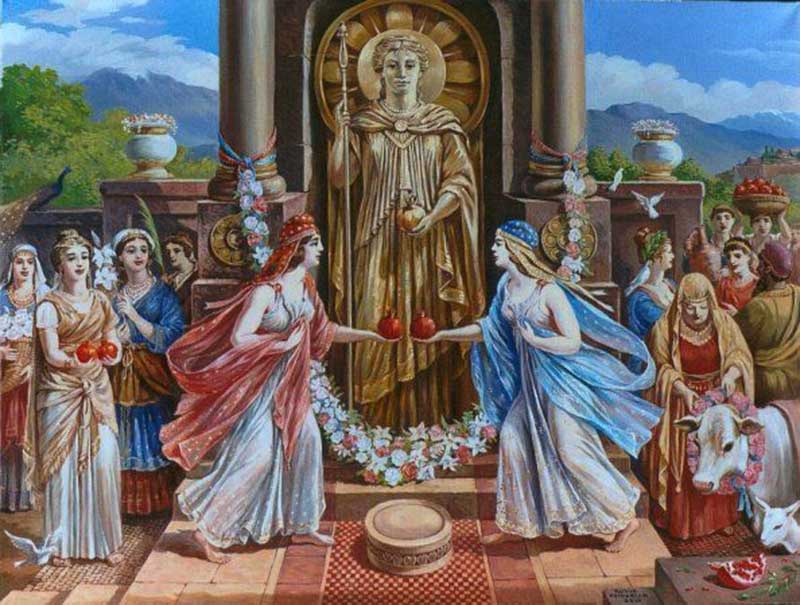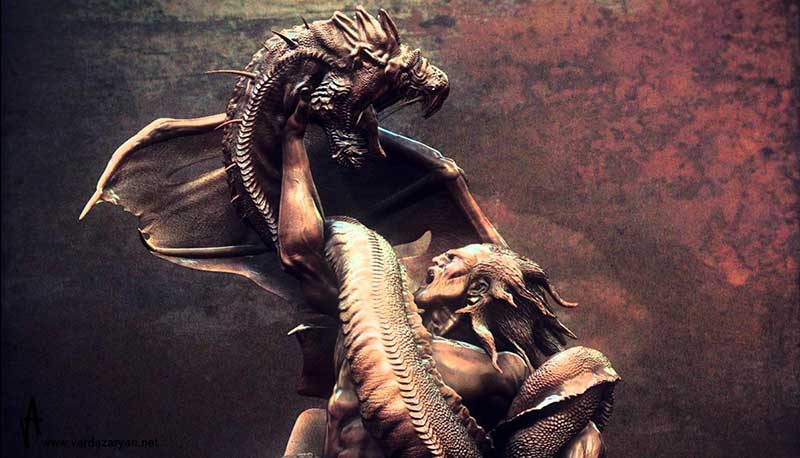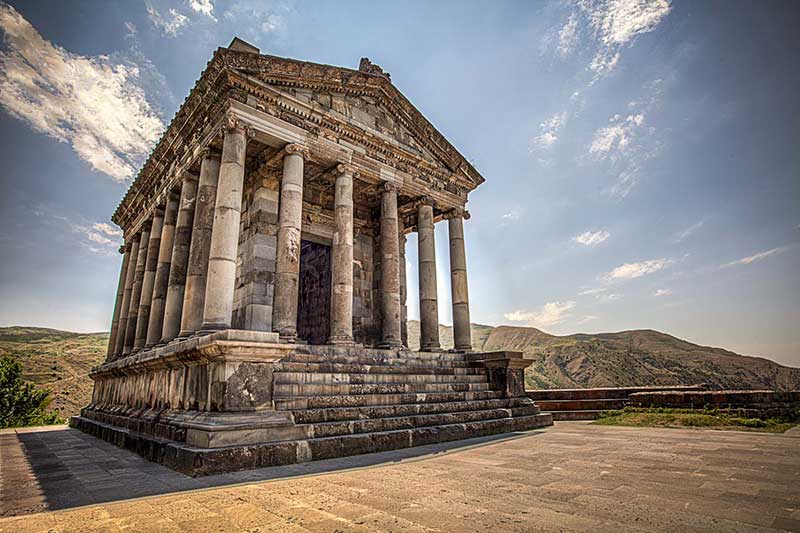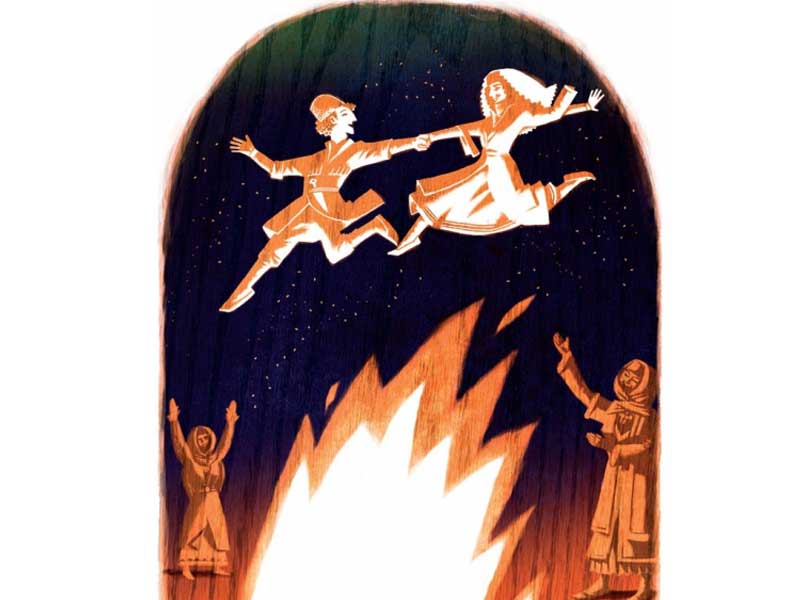Pagan Armenia
Armenia was the first country to adopt Christianity, but long before they became Christians, Armenia was a pagan country. Like any other pagan nation, the Armenians had their own gods and mythology, which tells the story of not only Armenians, but also the history of all mankind.
The word paganism and pagan Armenian sounds “hetanos, hetanosutyun”, from the Greek word “ethnos – people”. That meant that Paganism was a national religion. According to old Armenian or Aryan belief the only creating nature is Aryan people. Aryans claimed that the creator (Ara Ararich, has no beginning, it is absolute, Ararich is the only one) created the rest of the gods and nations in Armenia. The name of the country and the people is directly associated with the Aryan religion. Great Flood and the Ark on Mount Ararat (Arar – the creation, at – a place) associated with the Aryan nation, who are the ancestors of the Indo-Europeans. This is where the Aryans spread all over the world, and those who remained in the Ararat Valley, became known as Armenians, and the country was called Armenia.
There were many gods in Armenian pantheon but unfortunately we have only part of them mentioned. The most favorite gods worshiped by the Aryan people were God of War Vahagn (the day of the birth of Vahagn celebrated on March 21, the day when the Aryan people celebrated New Year), Our Lady Anahit, the goddess of love and beloved Astghik and the god of sun Mithras (Aramazd). The gods of the Armenian pantheon are often compared with the ancient gods of the Hellenistic era. So, Aramazd was compared with Zeus, Anahit with Artemis, Vahagn with Hercules and etc.
We have Armenian mythology thanks to folk legends, as well as the works of ancient Greek and medieval Armenian writers. We have heard many myths about the gods, which tell us about the great power of love, righteous and mighty gods. Unfortunately, the same can not be said of the pagan temples. After the king Trdat 3 proclaimed Christianity as the state religion, the country began a fierce struggle against paganism and in the shortest period there were destroyed almost all pagan temples throughout the country. There is only one pagan temple, which is considered one of the most important historical monuments in the territory of Armenia.
Garni Temple
The pagan temple of Garni is located above the gorge of the Azat river. The temple was built in the 1st century by the king Trdat I and dedicated to the God of Sun Mithras, and there is the witness, an inscription in Greek. It’s hard to say why Garni survived after the adoption of Christianity, but today as the only evidence of pagan culture, temple is strictly guarded.
The temple was built in the style of Greek architecture, and it is a kind of replica of the famous temple of Athena. The facade is decorated with 24 columns. The temple is built of huge basalt blocks and thanks to them it has survived the centuries. The temple stands on the podium with a wide staircase. Ornaments and the temple in general shows the development of architecture of ancient Armenia.
The temple was destroyed after a strong earthquake in 1679, but was completely restored in 1970. To restore the temple there were used the scattered fragments of the gorge of the temple, as well as new stones. Next to the temple there is a royal place with several rooms: the dressing room, swimming pool with cold and hot water boiler. The floor is decorated with colorful mosaics with mythical characters and the inscription in Greek “We worked hard without getting a reward.”
Pagan Holidays
Despite the fact that Armenia was the first to adopt Christianity, and 97% of the population, Christians, pagan rituals and celebrations were in culture. Studying the history of national holidays, you can find far-reaching roots in pagan Armenia.
Terndez
The worship of fire is a pagan rite, called Derendez (pile of hay in front of the house). Derendez is celebration of fertility and prosperity. People light a fire in the yard, to bring fertility and prosperity into the house. Young people gathered into a circle and jumped over the fire in pairs holding hands. It was believed that the fire got magic force that was transmitted to people jumping through fire. After the adoption of Christianity, the holiday was renamed Terndez (ter – Lord), literally “the Lord is with you.”
Vardavar
One of the most favorite holidays Vardavar also has pagan roots. Vardavar was celebrated in the glory of the love of god Vahagn and goddess Astghik. The name Vardavar or Vardamatn is translated as shower of roses. Goddess Astghik presented roses and pored rose water: she spred love and beloved Vahagn defended this love. After the adoption of Christianity Vardavar is celebrated as the day of the Transfiguration of Christ. However, the holiday has presered its pagan rituals.

 English
English






Post Discussion